warsha sahara
The existence of the Slave Festival has been mentioned, but local associations have been working for a long time on international social projects with very interesting exchanges between young people from Tighmert and Europe. Also the women from Qafila Tighmert Cooperative (they make traditional tents and carpets) do projects in partnership with Moroccan and European associations. In 2013 we organised Warsha Sahara in the framework of Marsad Drâa a series of workshops on rammed earth construction and oasian contemporary art. We put in practice what we had learnt during mAdinAlAb in the medina of Tetouan in 2011.
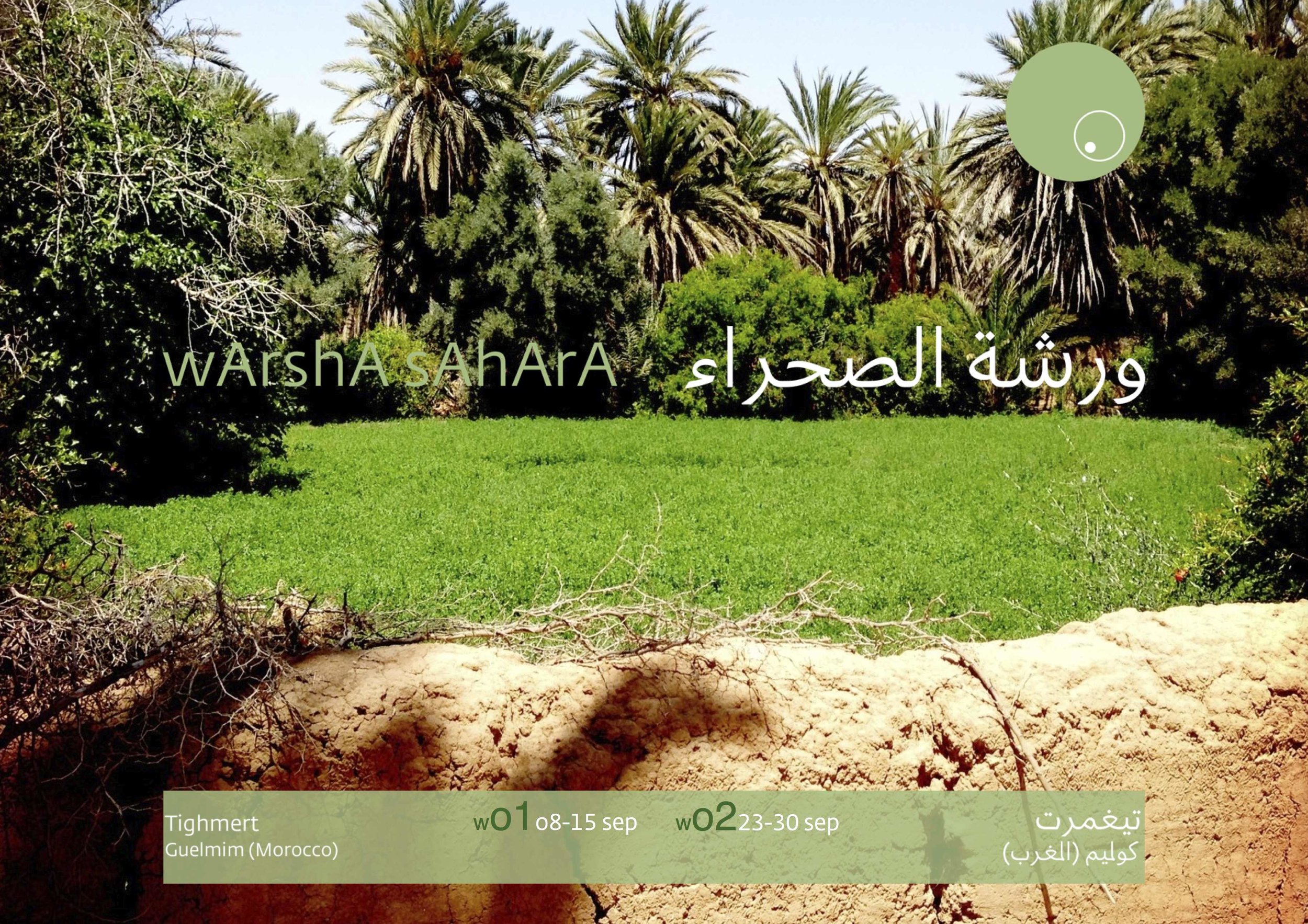
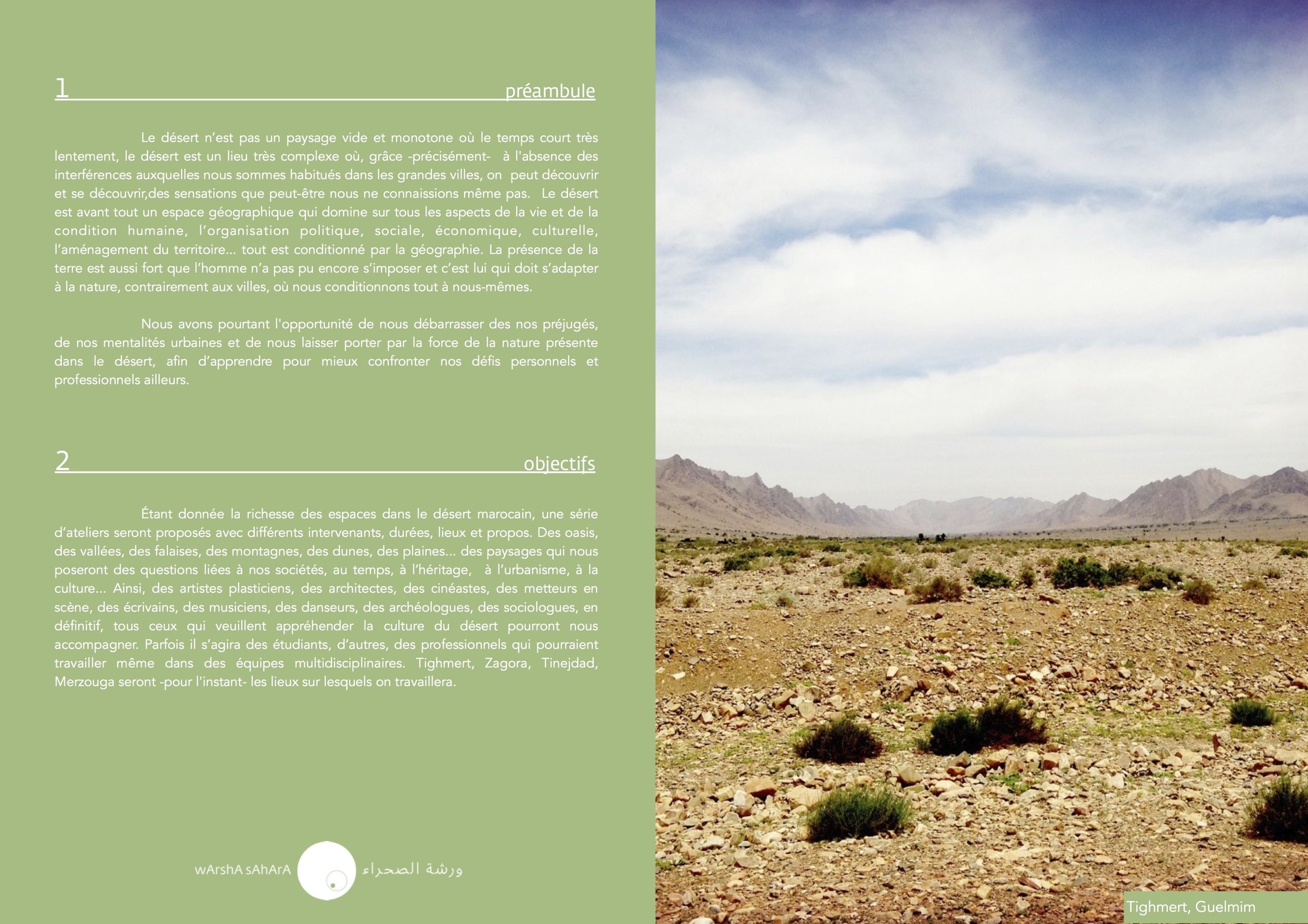
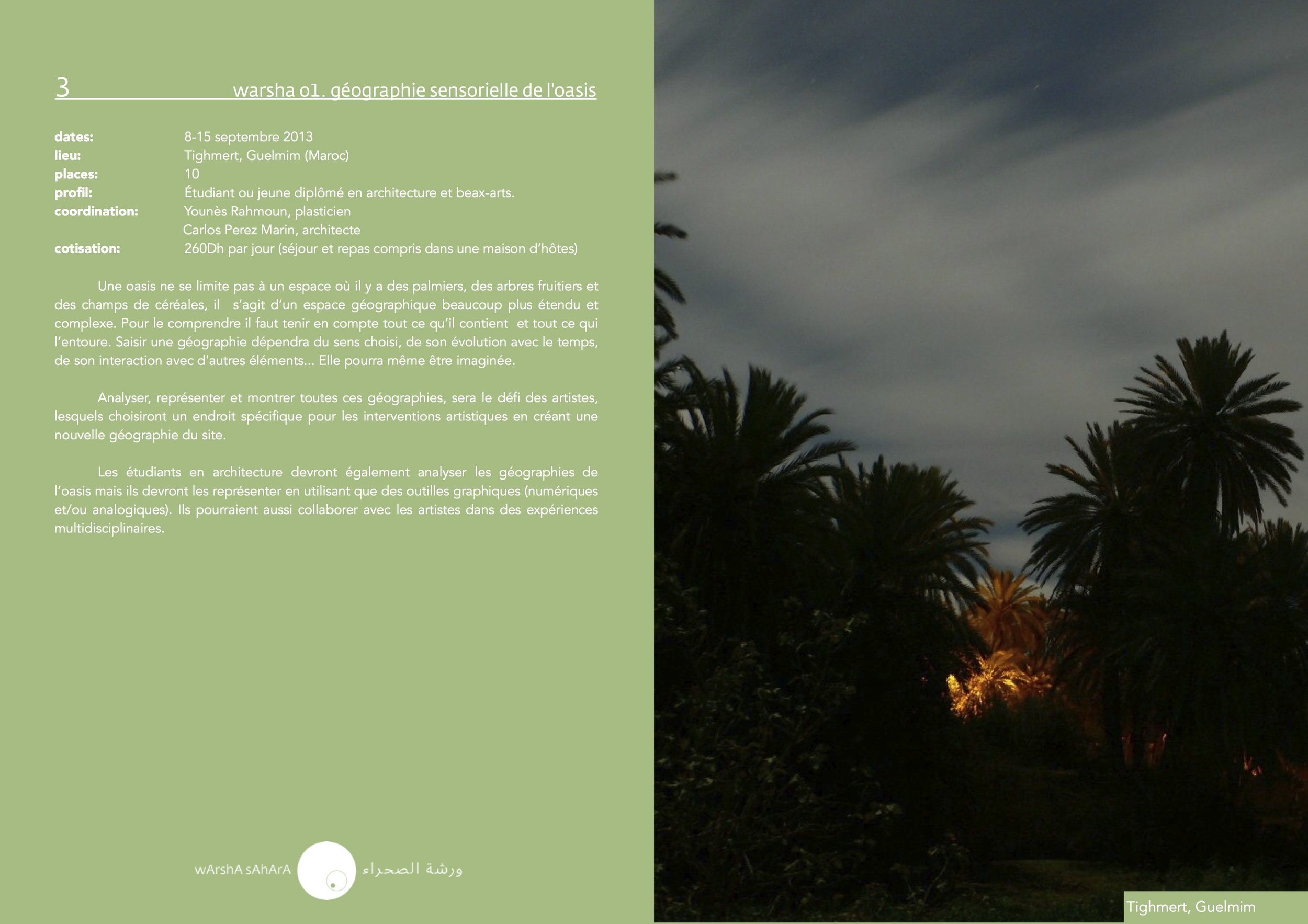
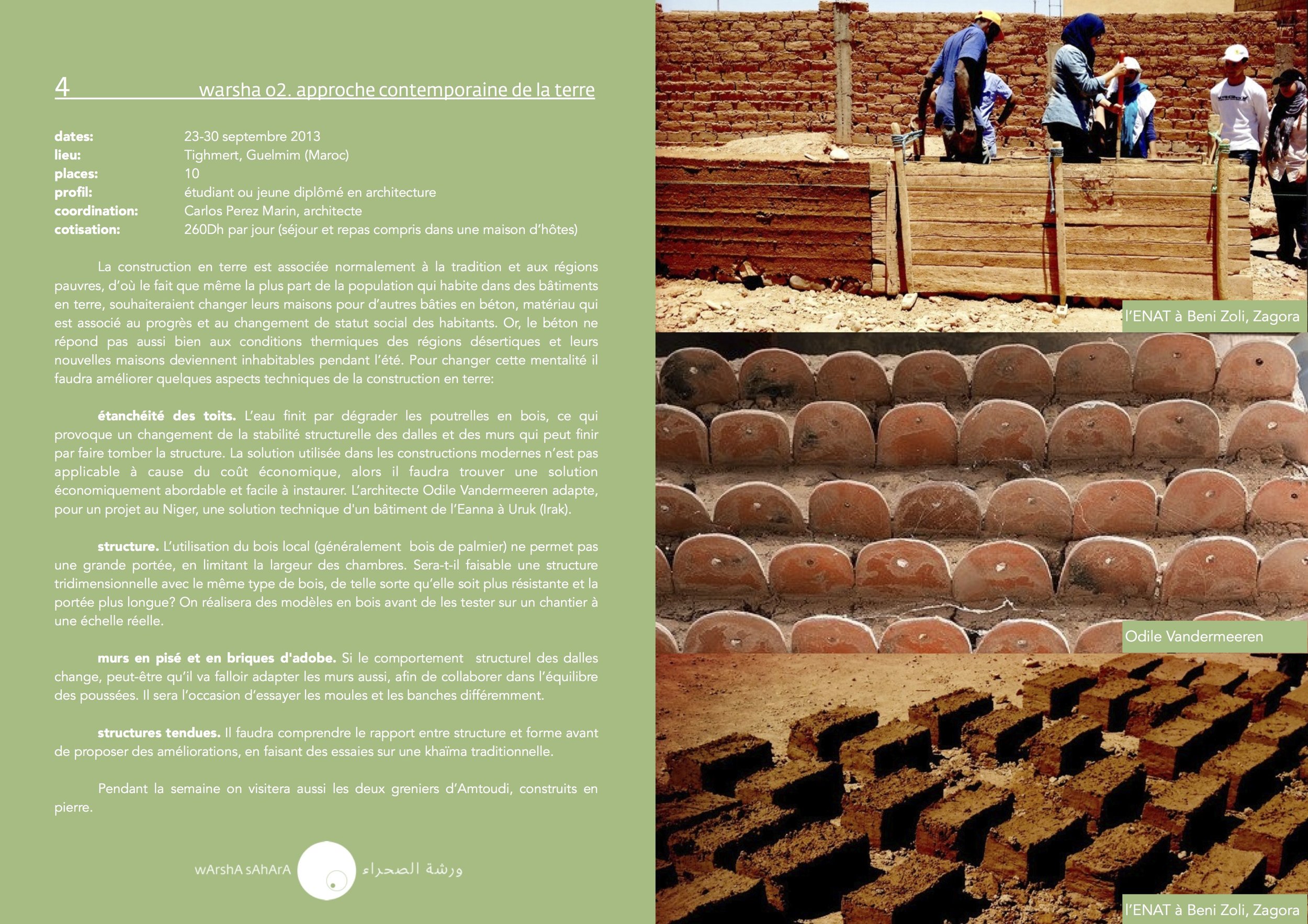
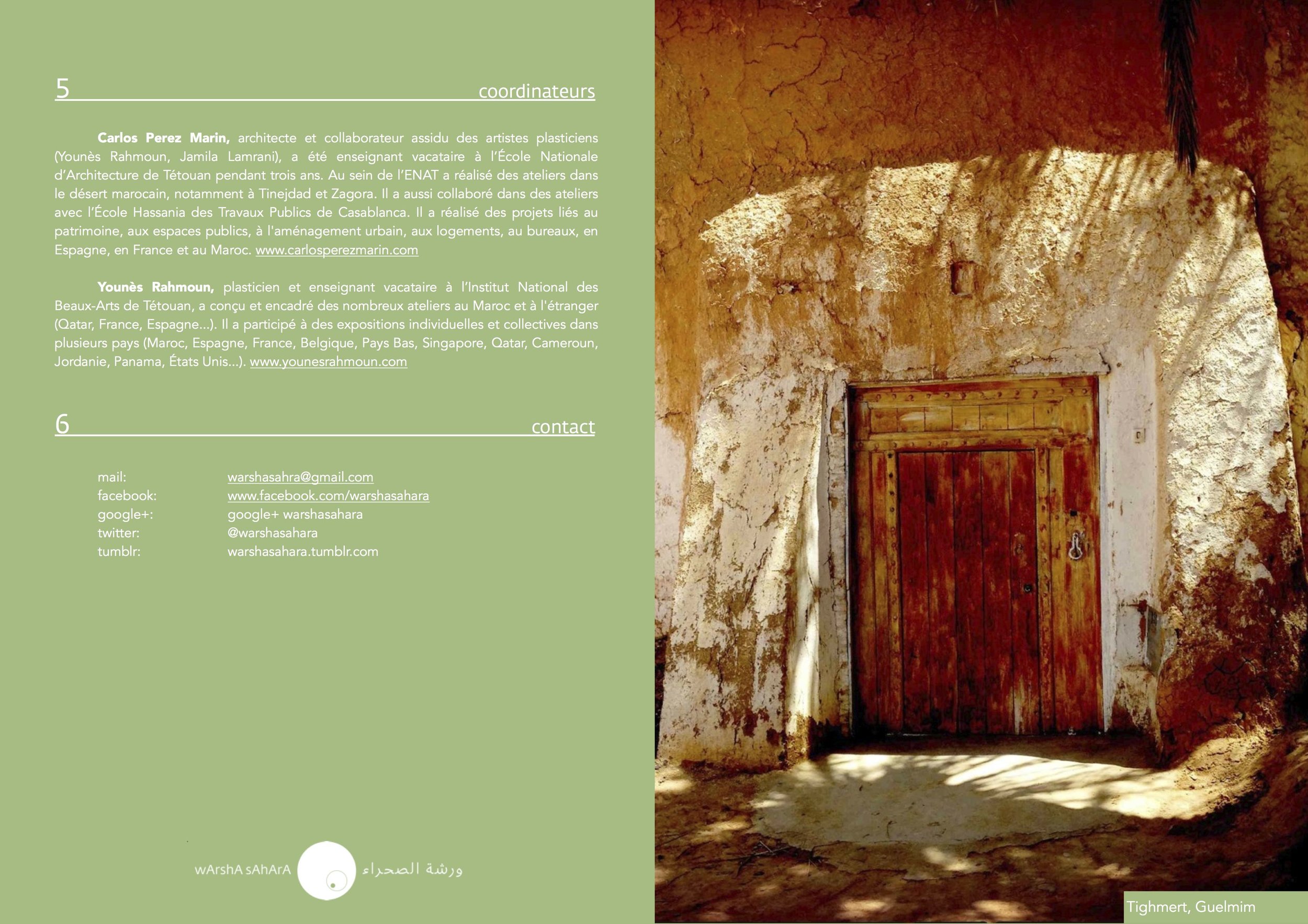
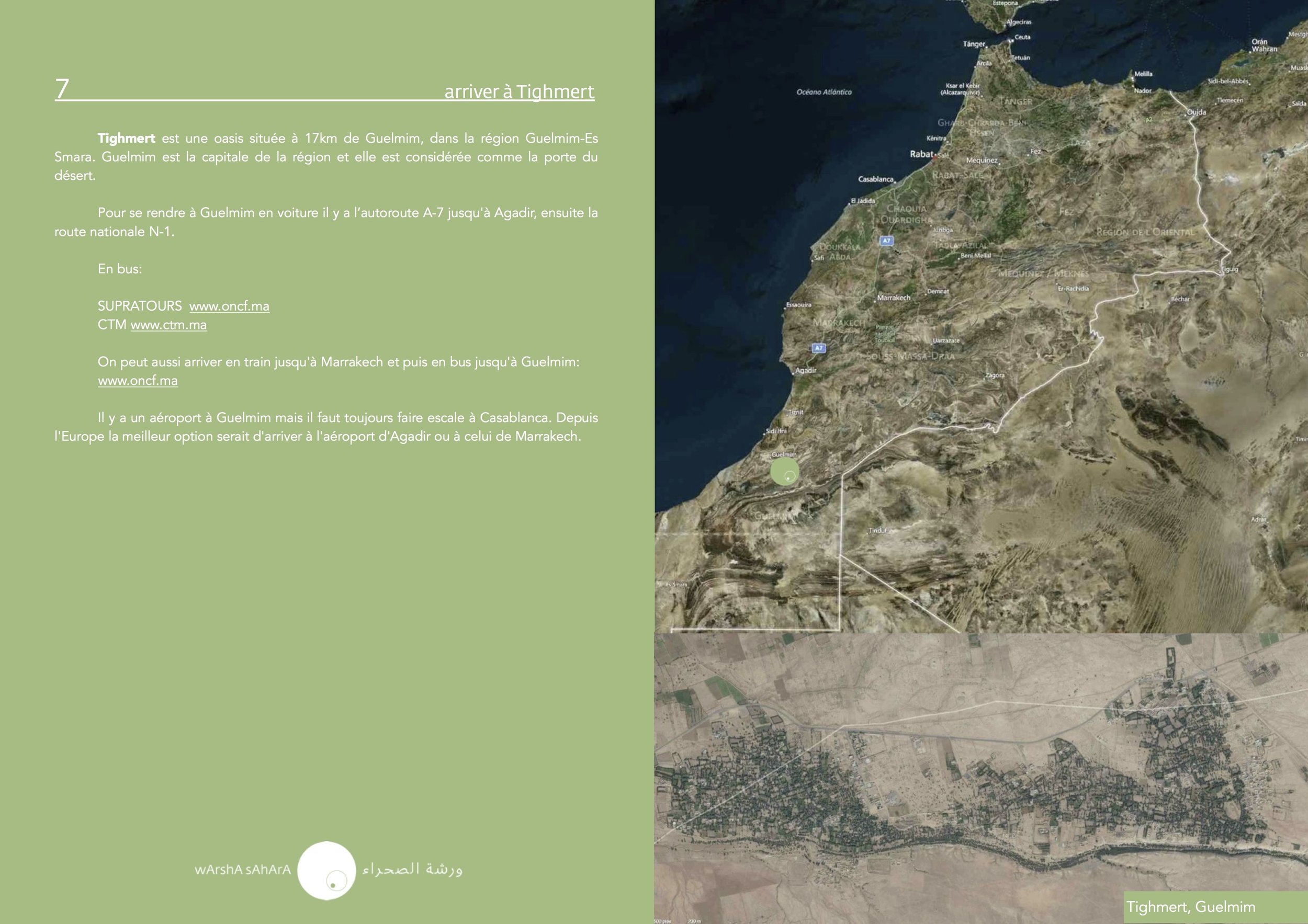
Visual artist Rachid Ouhnni wanted to explore the relation between public space and how children use it. He started to ask them a simple question: "What do you do in the oasis during the holidays?". They answered: "Sometimes we build houses, others boat racings".
builders of the desert
The children told us that sometimes they spent some time building houses (reduced models) and to show us they built a village the day after. They explained every detail, showing a degree of maturity difficult to find in children of their ages (between 6 and 10 years old). They talked about the materials, the construction system, the way to protect the houses from the wind and sand, planting trees at the entrance, the importance of the courtyard and the tent that will avoid the sunshines in summertime to come inside, the need to extend one of the pillar to hang the electricity wire. We could also learn about the inner organisation of the space, at least how they would like to live if they were the architects...
Omar
Abderrahim
Ali
Yassir
sailors of the desert
We were really surprised when they told us they used to organise boat races. Boat races in the middle of the desert!
First they had to build the boats, then they explained us how they did them.
The next step was to find water in one of the many canals of the oasis. The question was: Where could we find water? Ahmed Dabah explained us during the search how it worked the water distribution, water that comes from the spring situated 2 km away from the palm grove.
After trying in several canals, they finally found one where water flowed quickly, so they could do the race.
This activity let us discover the irrigation system of most of the oases in southern Morocco, with two calendars, one in summertime with 34 days and another in winter with 33 days. For 24h, people work diverting water from one canal to another, one day they can get water at 3pm and next month it can be another day of the week at another time, maybe at 3am, that means there is a huge social interactivity thanks to the irrigation system. Even more, the economical organisation of the inhabitants depends on this irrigation system, as well as the urban planning because the last plot of the oasis to get water at the end of the day, will have the water remained in the canals, that is to say, they will have more water, that's the reason way those plots are more expensive, because they own more water.
This workshop exposed us not only the possibilities of working in an oasis with visual artists, also the creativity of children that deserved a better artistic education. At the end that was just a test for what would come two years later, even if we did not know...


